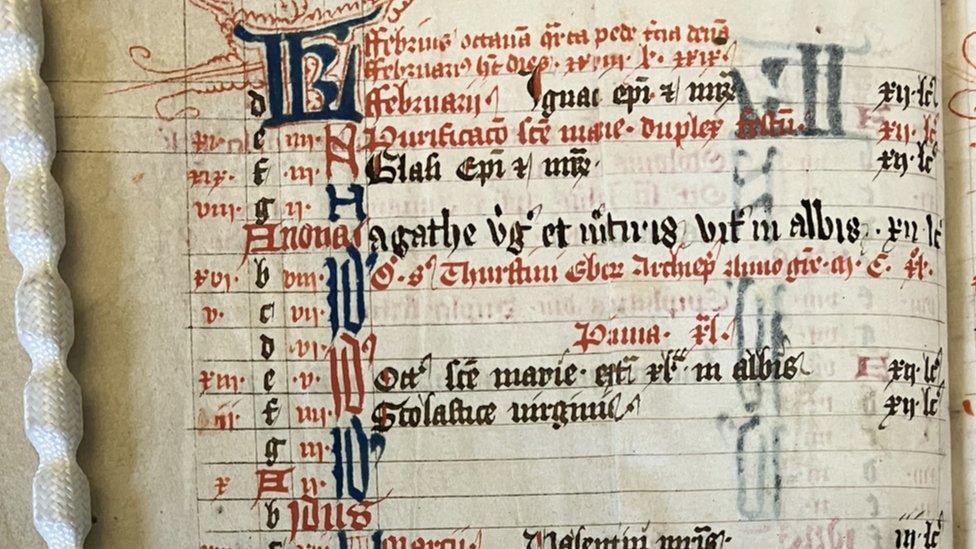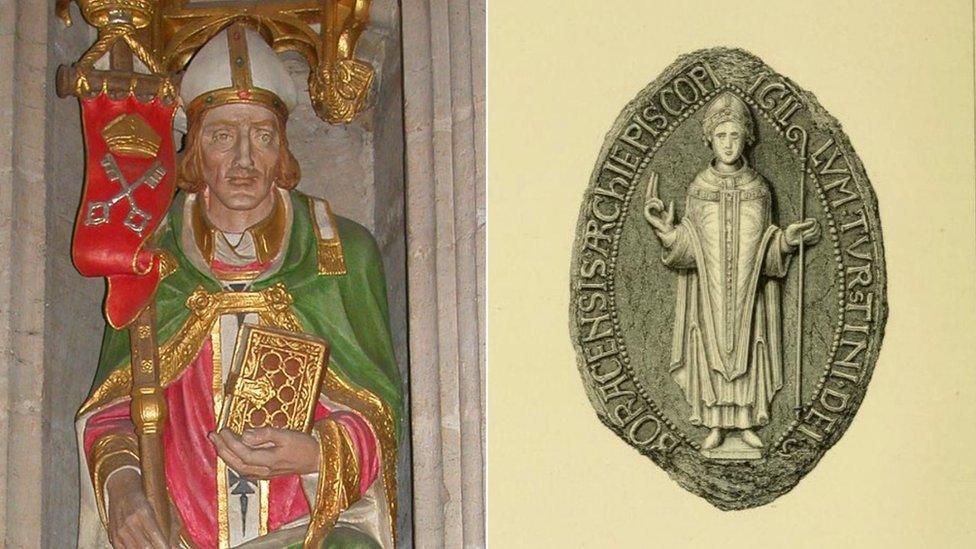York: Manuscript proves 12th Century archbishop was classed as saint
- Published

The manuscript has provided proof of Thurstan's sainthood
A 15th Century manuscript has helped to prove a former Archbishop of York was a saint, according to English Heritage.
Thurstan, who was archbishop from 1114 to 1140, was previously thought to have been passed over for sainthood, the organisation said.
A service book from Pontefract Priory listed him in a calendar of saints' feast days observed at the monastery.
Dr Michael Carter, from English Heritage, said it was "unambiguous proof" that Thurstan was a saint.
He discovered the manuscript in the archives at King's College, Cambridge and said it was written in Latin.
Translated into English, the entry for 6 February reads: "Death of Saint Thurstan, archbishop of York, year of grace, 1140".
The record is written in red ink, which Dr Carter said was a sign of its importance to the monks at the time.
"Thurstan is well known amongst medieval historians and scholars as a figure of immense political and social significance during the early half of the 12th Century, but all have denied that he ever achieved sainthood," he said.
"The entry in this manuscript is unambiguous proof that Thurstan was indeed a saint and that his name should be seen alongside other religious contemporaries in northern England."

St Thurstan died at Pontefract Priory in 1140
St Thurstan was a figure of international influence, involved in the affairs of church and state.
Dr Carter said he was also a supporter of religious reform and played a key role in the foundation of many of northern England's greatest monasteries.
Born in Normandy in 1070, he visited the Abbey of Cluny as a young man and vowed to one day become a Cluniac monk.
On 25 January 1140, aged nearly 70, he fulfilled this vow by resigning from his position and retiring to the Cluniac priory at Pontefract.
He died less than two weeks later on 6 February and was buried before the high altar at Pontefract Priory.

Follow BBC Yorkshire on Facebook, external, X (formerly Twitter), external and Instagram, external. Send your story ideas to yorkslincs.news@bbc.co.uk, external.